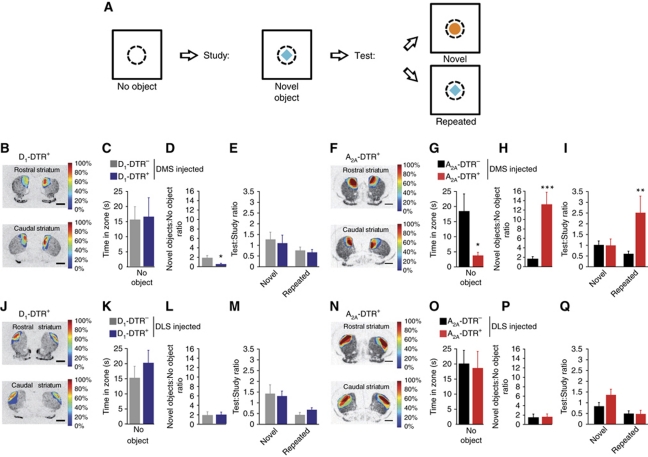Figure 7.
Object recognition task of DMS or DLS D1R- and D2R-MSN ablated mice. (A) Decoupled delayed spontaneous object recognition task, in which time spent in an open field core zone (dot line) is recorded without object, with novel object or repeated object. (B, F, J, N) Topographic representation of the lesioned areas in D1-DTR+ (B, J) and A2A-DTR+ (F, N) DT-injected mice into the DMS (B, F) or the DLS (J, N). Colours represent percent of superimposed lesioned areas. (C–E, G–I, K–M, O–Q) Time spent in the open field core in the absence of object (C, G, K, O), time spent in open field core in the presence of novel objects divided by the time spent in the open field core without object (D, H, L, P) and time spent in the open field core during the test phase divided by time spent in the open field core during the study phase in novel or repeated conditions (F, I, M, Q) of DMS D1-DTR (C–E) and A2A-DTR (G–I) or DLS D1-DTR (K–M) and A2A-DTR (O–Q) DT-injected mice. Data are reported as mean±s.e.m. (n=6–10 per group). Statistical comparisons were made as described in Materials and methods. *P<0.05, **P<0.01, ***P<0.001.

